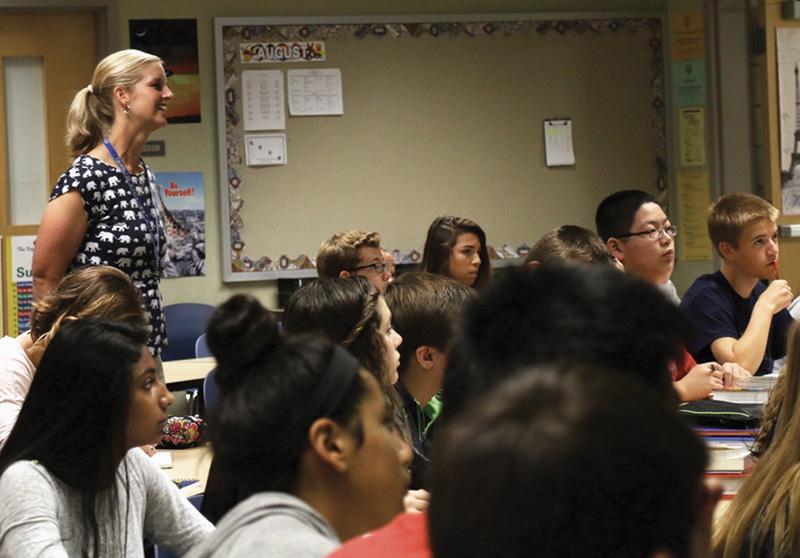A fair amount of students. A class that utilizes visual learning. Junior Olivia “Olive” Phillips said these aspects are what appeal to both her learning style and environment, although she spends one period every day with approximately 56 other students in her English 11/U.S. history block class, team-taught by social studies teacher Matt Dillon and English teacher Cynthia Martin. While Phillips said larger classes, like her block class, do not necessarily inhibit her success at CHS, she said this concept can have implications on students at other schools.
“I wouldn’t say that (achievement levels decline with an increase in class sizes) here at CHS. But, I can see why (one) could say that, because when there is a larger amount of students, depending on where the student is placed in the room and who they are sitting next to, they might not be listening at all. It just depends on what teacher it is and what class (it is),” Phillips said.
According to a study by the National Education Policy Center (NEPC) in 2014, smaller class-size ratios have many positive effects on the student population as a whole, including higher test scores, as well as higher high-school graduation and college-enrollment rates.
Assistant Principal Joe Schaller said class sizes here don’t necessarily inhibit academic success. Schaller also noted how class sizes have not gone up tremendously from previous years.
“As the school continues to grow, our test scores continue to grow,” Schaller said. “While (larger class sizes inhibiting academic achievement) may be common in a lot of schools, we’ve been pretty fortunate in that our students continue to do very well.”
Teachers can play a vital role in that success. Phillips said she believes utilization of two different teachers in her block class is a benefit of being enrolled in the class.
“Although my block classroom is a huge class, my teacher, Mr. Dillon, is amazing. He gets all the students involved in one way or another (and) he makes it easier for us to remember stuff. So the larger number (of students), is actually not that bad,” Phillips said.
 Contrary to the beliefs of Phillips, however, senior Beth Hannah said larger class sizes can inhibit her from being successful in some of her classes. For example, Hannah said she was enrolled in Sports Medicine 1 her sophomore year, which in number of students, equates to that of a block class. According to Hannah, her class of about 50 to 60 students had two teachers designated for the class, but only one teacher would be teaching at a time. Hannah said the size of that class hindered the learning process due to the large student-teacher ratio.
Contrary to the beliefs of Phillips, however, senior Beth Hannah said larger class sizes can inhibit her from being successful in some of her classes. For example, Hannah said she was enrolled in Sports Medicine 1 her sophomore year, which in number of students, equates to that of a block class. According to Hannah, her class of about 50 to 60 students had two teachers designated for the class, but only one teacher would be teaching at a time. Hannah said the size of that class hindered the learning process due to the large student-teacher ratio.
“I think that teachers need to make sure that their students are getting the concepts and are able to apply it,” Hannah said. “I personally like smaller classrooms, because they allow for students to connect better. It (allows) you to be more comfortable to ask questions to the teacher and the students.”
According to a study released in 2011 by Elsevier, an academic publishing company centered on the publication of medical and scientific literature, the benefits of smaller classes are usually seen in lower level students, specifically at the secondary level. Increases in achievement are due to enhanced individual attention and engagement.
Last school year, Hannah was part of an IB Psychology class with approximately 20 students total and she said this environment helped her achieve success.
 “With that environment, the student body in that class felt a lot more comfortable with each other, and the teacher-student relationship was strong. I personally felt a lot more comfortable asking questions and working with the kids around me,” Hannah said.
“With that environment, the student body in that class felt a lot more comfortable with each other, and the teacher-student relationship was strong. I personally felt a lot more comfortable asking questions and working with the kids around me,” Hannah said.
Within classes that have a larger amount of students, both Phillips and Hannah recognized that group work is usually more common. Katie Kelly, honors English 9/world history block teacher, said she also recognizes the importance of group work in engaging all students in a large class.
“We use small groups,” Kelly said. “We start with each person (having) an ‘elbow partner.’ When we want a bigger group, we will put them into groups of eight. That way, students get to hear a larger number of voices and it doesn’t become too time-consuming.”
According to the previously mentioned NEPC study, the increase in achievement is due to increased levels of student engagement, a greater amount of time on task and the ability for teachers to better tailor to their students’ needs. Kelly said tailoring to the needs of the students can be utilized with effective instructional skills.
“It depends on what you do with the class,” Kelly said. “I think there’s an element of having 25 to 30 kids allows you to divide into groups and it allows you to have good discussions, but as a teacher you have to be aware of that. You can’t just lecture all the time and expect to reach all of your students.”
Phillips said being taught in a classroom with a larger environment will help her in the future, even looking past CHS.
“You’ll have to work in many groups with various types of people in the real world,” Phillips said. “I want to go into international business and marketing. Since I want to be in marketing, the social skills that I will gain in this class and the experiences here (at CHS) will help me in the business field.”











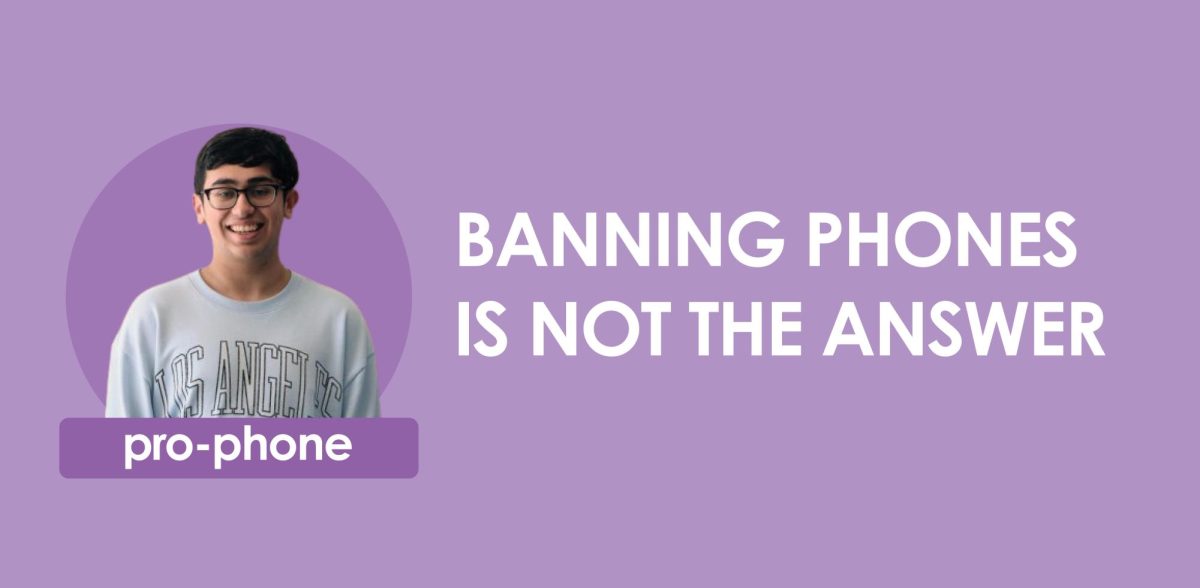
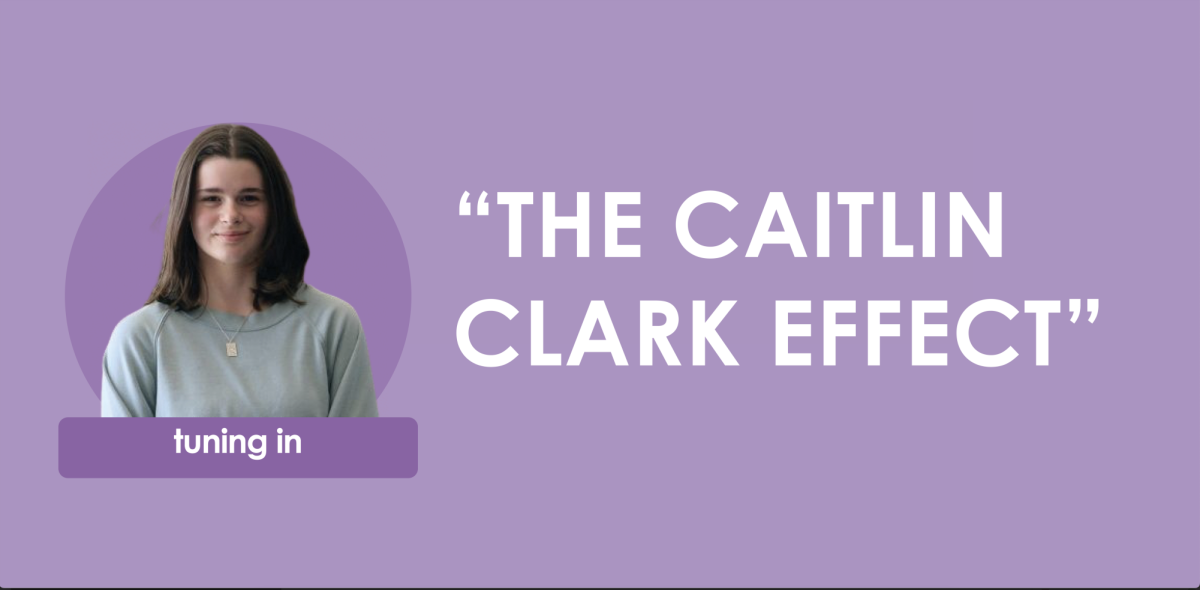
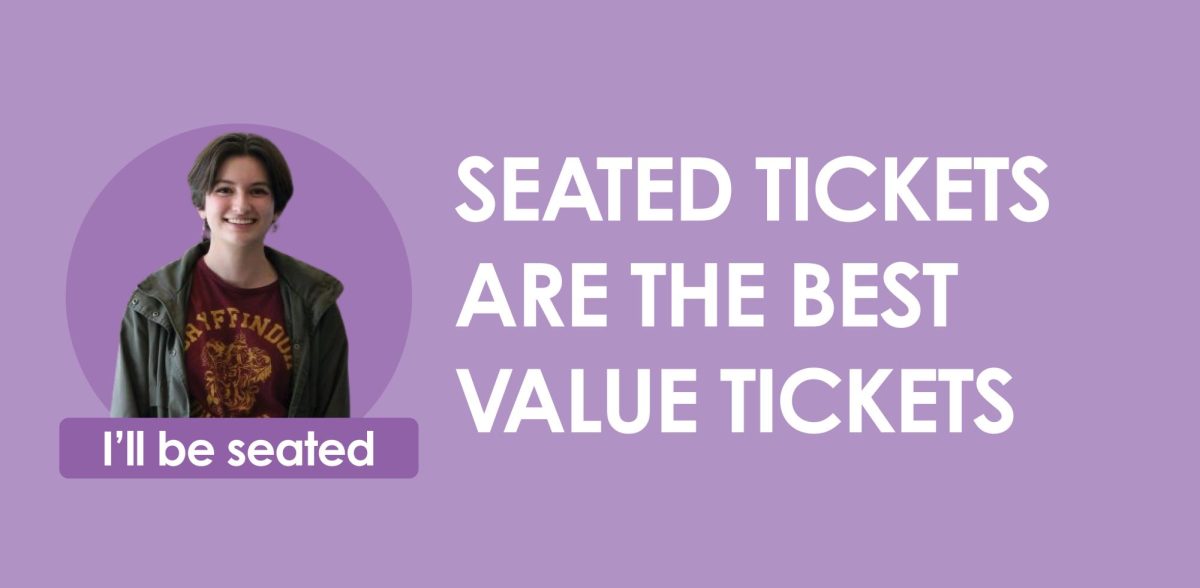



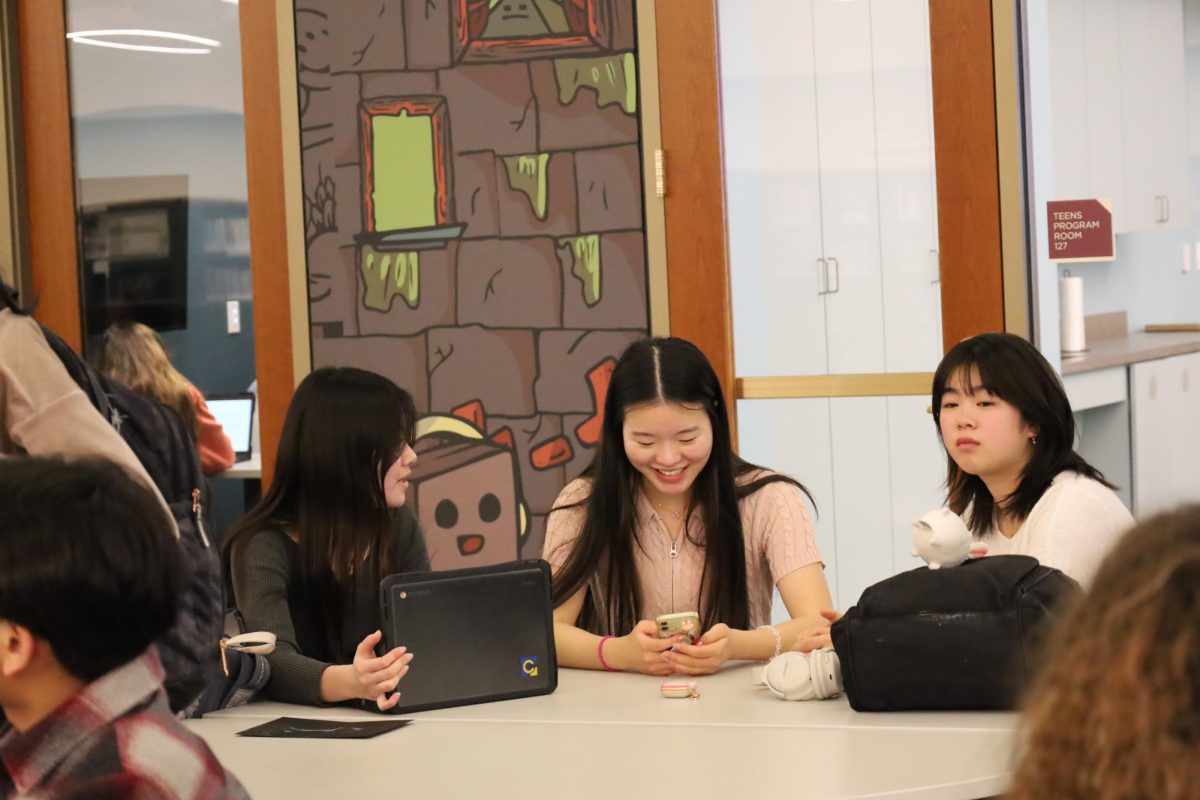


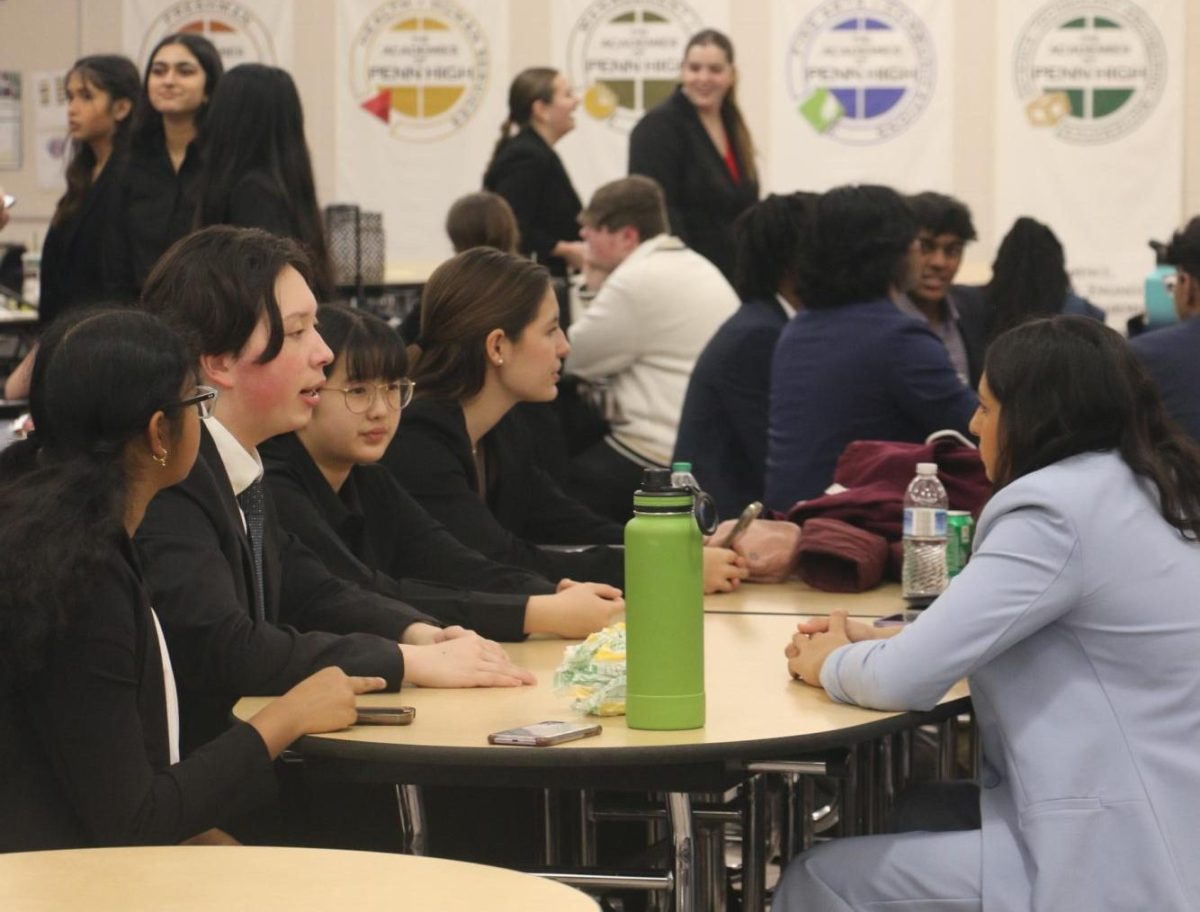
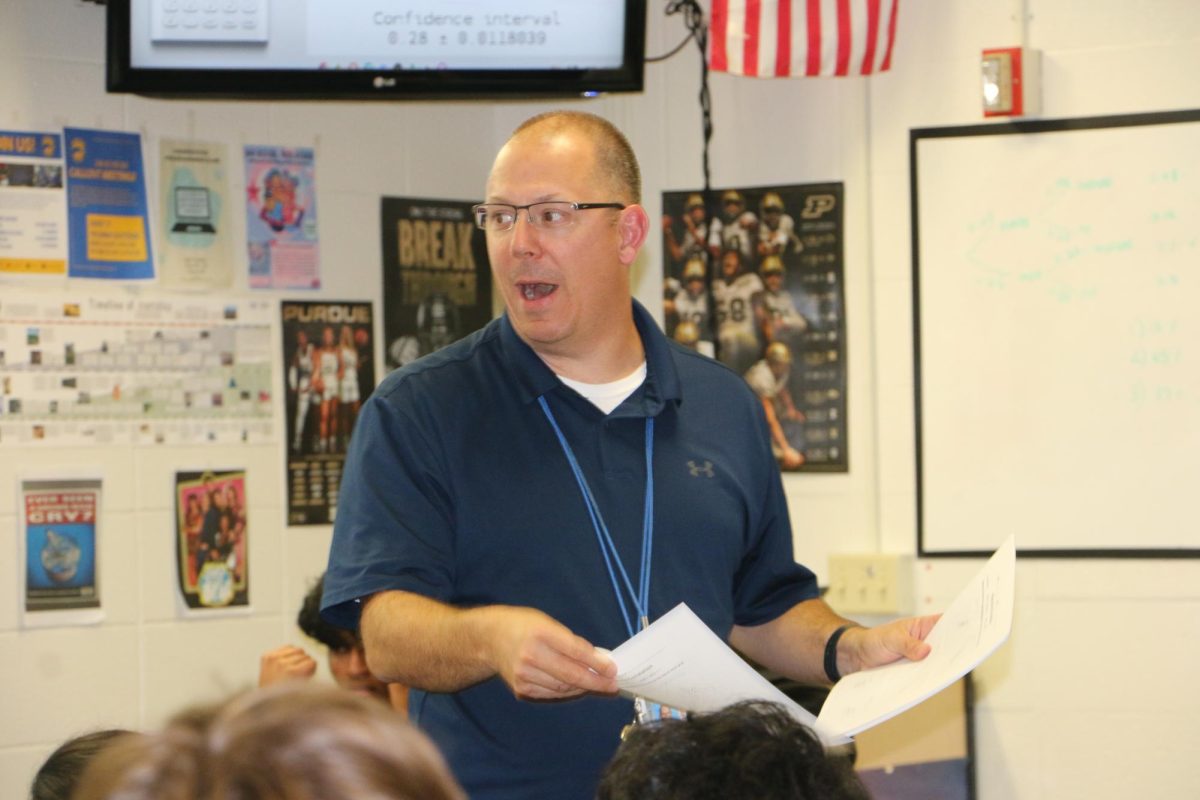



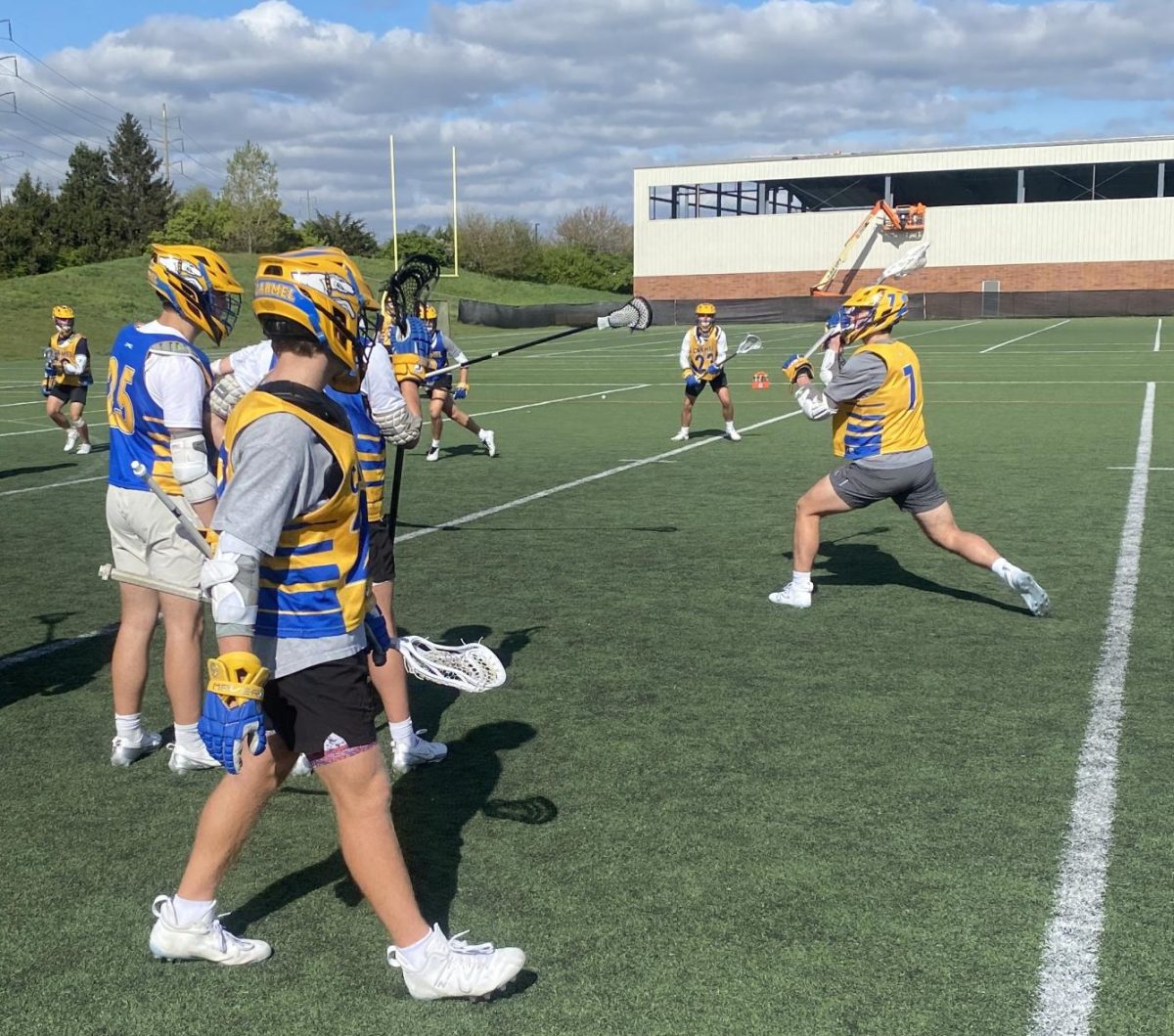




![Family vlogger controversy, need for content reform [opinion]](https://hilite.org/wp-content/uploads/2024/05/Screenshot-2024-05-14-11.33.37-AM-1200x465.png)





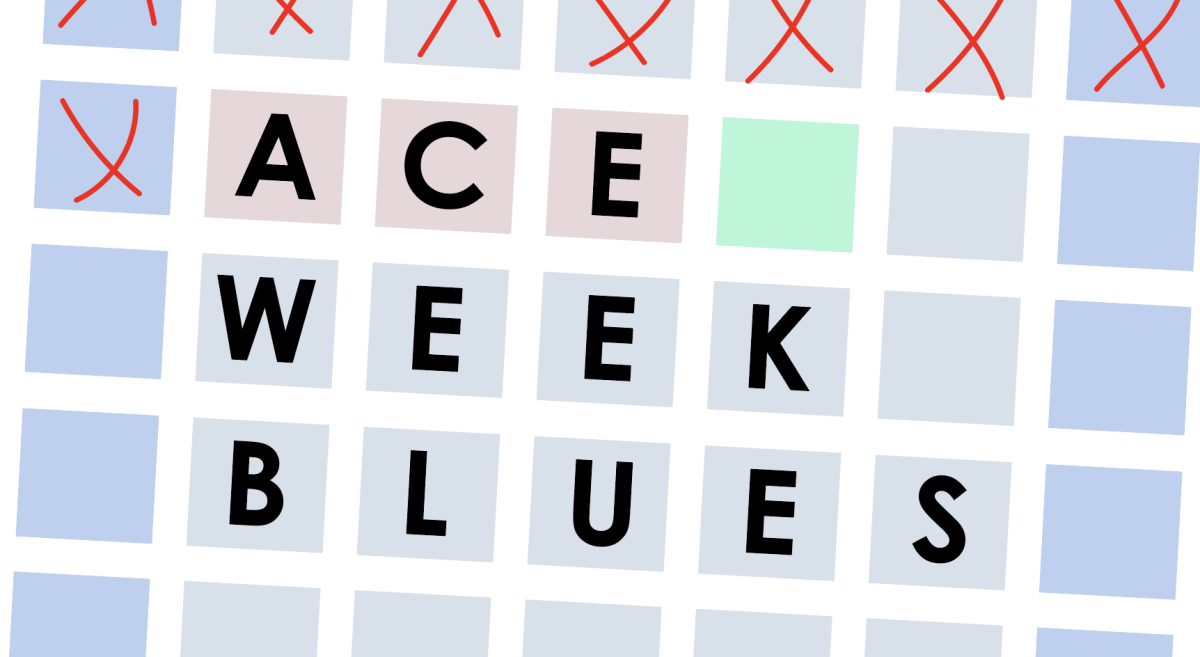
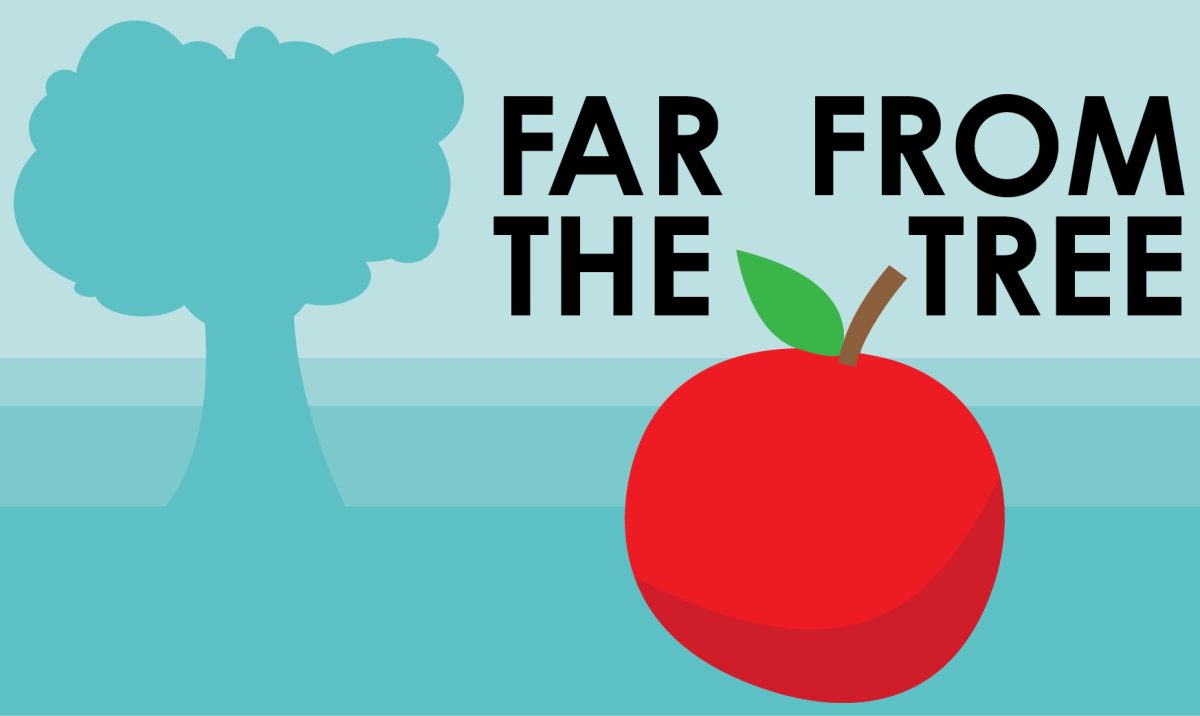

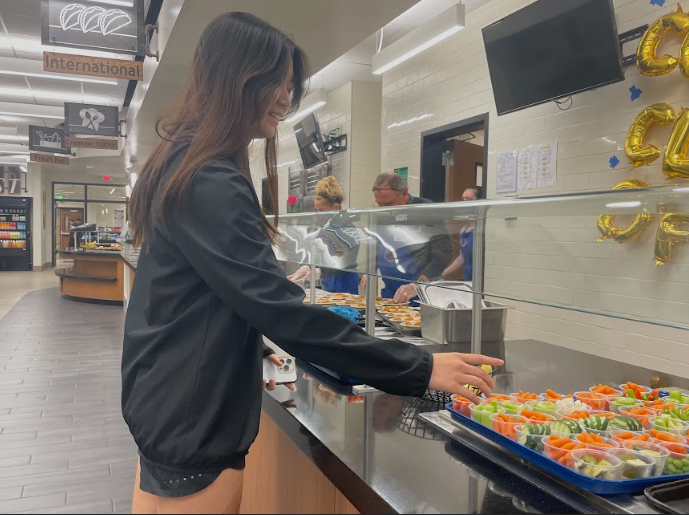
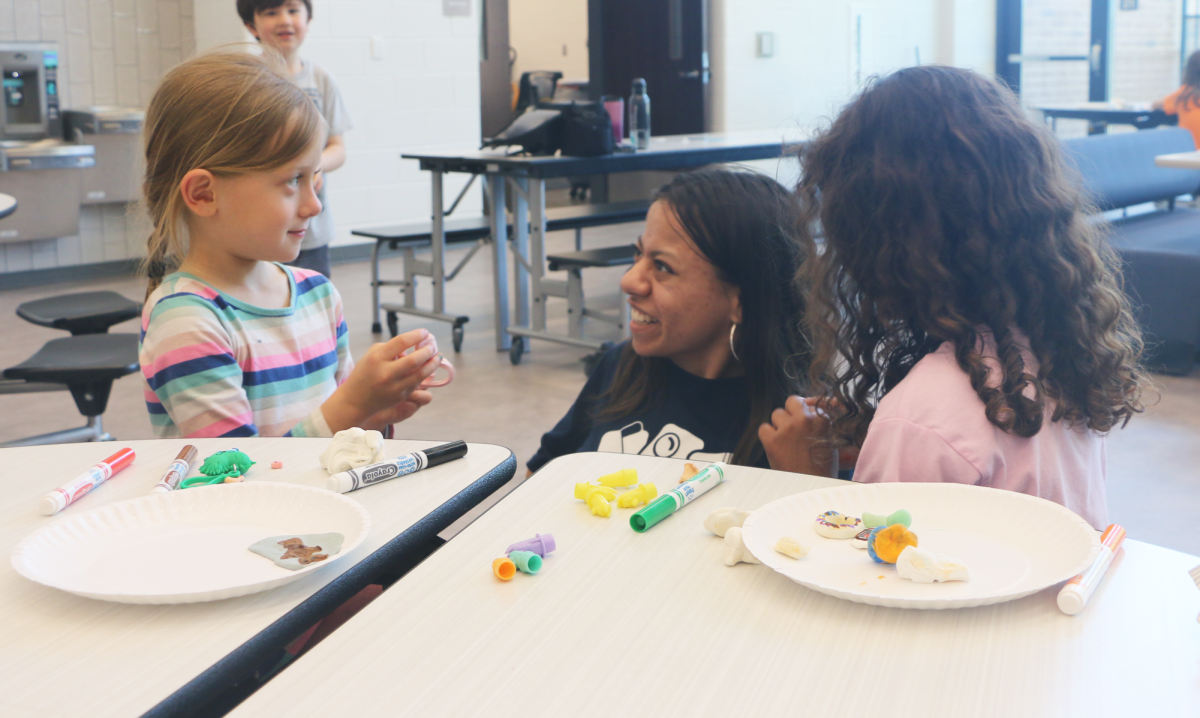


















![Review: Taylor Swift’s new album The Tortured Poets Department is not her best work but is still a brilliant album [MUSE]](https://hilite.org/wp-content/uploads/2024/05/The-Anthology_Cover-1200x675.webp)
![Review: Challengers does it all [MUSE]](https://hilite.org/wp-content/uploads/2024/05/challengers-poster-1200x600.png)
![Review: A House of Flame and Shadow by Sarah J. Maas was a disappointing read [MUSE]](https://hilite.org/wp-content/uploads/2024/05/house-of-flame-and-shadow-feature.png)
![Review: Conan Gray’s new album, “Found Heaven”, is a refreshing twist on modern music [MUSE]](https://hilite.org/wp-content/uploads/2024/05/Screenshot-2023-10-31-at-16.01.05.webp)
![Review: “Bodies, Bodies, Bodies” is the quintessential Gen-Z movie [MUSE]](https://hilite.org/wp-content/uploads/2024/05/Screenshot-2024-05-15-140618.png)
![Review in Print: Maripaz Villar brings a delightfully unique style to the world of WEBTOON [MUSE]](https://hilite.org/wp-content/uploads/2023/12/maripazcover-1200x960.jpg)
![Review: “The Sword of Kaigen” is a masterpiece [MUSE]](https://hilite.org/wp-content/uploads/2023/11/Screenshot-2023-11-26-201051.png)
![Review: Gateron Oil Kings, great linear switches, okay price [MUSE]](https://hilite.org/wp-content/uploads/2023/11/Screenshot-2023-11-26-200553.png)
![Review: “A Haunting in Venice” is a significant improvement from other Agatha Christie adaptations [MUSE]](https://hilite.org/wp-content/uploads/2023/11/e7ee2938a6d422669771bce6d8088521.jpg)
![Review: A Thanksgiving story from elementary school, still just as interesting [MUSE]](https://hilite.org/wp-content/uploads/2023/11/Screenshot-2023-11-26-195514-987x1200.png)
![Review: When I Fly Towards You, cute, uplifting youth drama [MUSE]](https://hilite.org/wp-content/uploads/2023/09/When-I-Fly-Towards-You-Chinese-drama.png)
![Postcards from Muse: Hawaii Travel Diary [MUSE]](https://hilite.org/wp-content/uploads/2023/09/My-project-1-1200x1200.jpg)
![Review: Ladybug & Cat Noir: The Movie, departure from original show [MUSE]](https://hilite.org/wp-content/uploads/2023/09/Ladybug__Cat_Noir_-_The_Movie_poster.jpg)
![Review in Print: Hidden Love is the cute, uplifting drama everyone needs [MUSE]](https://hilite.org/wp-content/uploads/2023/09/hiddenlovecover-e1693597208225-1030x1200.png)
![Review in Print: Heartstopper is the heartwarming queer romance we all need [MUSE]](https://hilite.org/wp-content/uploads/2023/08/museheartstoppercover-1200x654.png)






















![Review: “Ginny & Georgia” is a dramatic and poorly made emotional rollercoaster–and I loved it anyway [MUSE]](https://hilite.org/wp-content/uploads/2024/03/ginny-and-georgia-season2-main-be37bbb9487a41e88b3f66c3baacd5c3-300x177.jpg)
![Review: Witch Hat Atelier is a masterpiece in art and world-building, but the story has only begun [MUSE]](https://hilite.org/wp-content/uploads/2024/01/unnamed-211x300.png)
![Review: “Mysterious Lotus Casebook” is an amazing historical Chinese drama [MUSE]](https://hilite.org/wp-content/uploads/2024/03/0-300x170.webp)
![Review: “A Little Life” by Hanya Yanagihara is the epitome of a heartwrenching masterpiece [MUSE]](https://hilite.org/wp-content/uploads/2024/01/unnamed-5-300x200.png)




